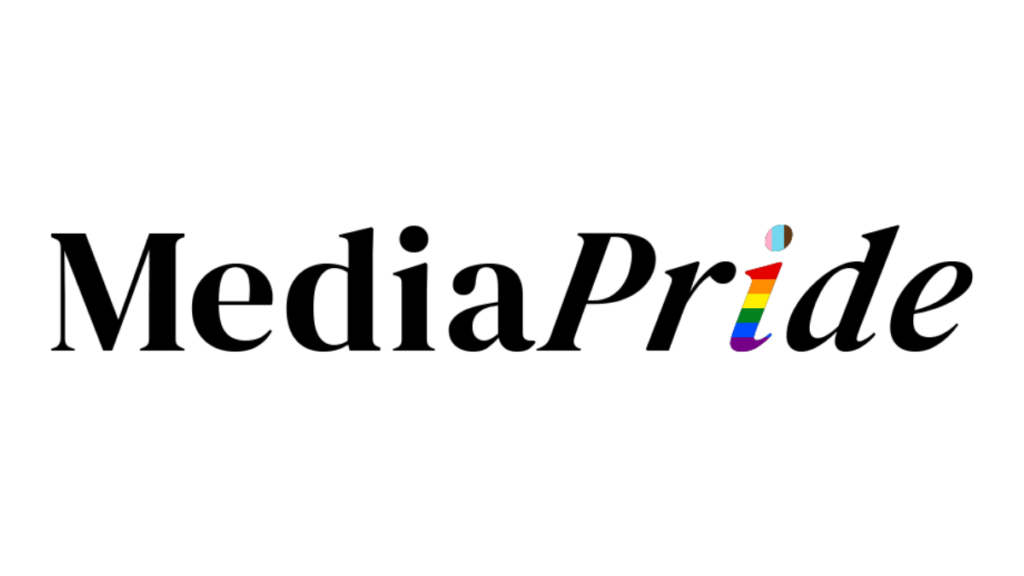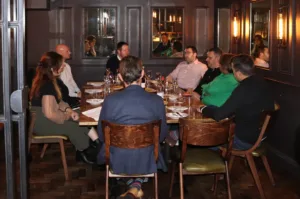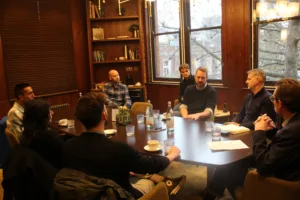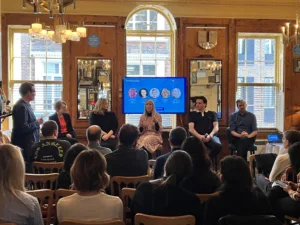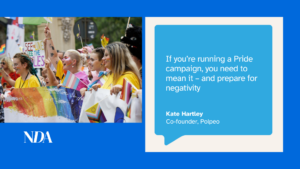There are few certainties in life. Christmas will come but once a year, it will rain on every bank holiday – and June will see an explosion of rainbow flags as the LGBTQ+ community and its allies ‘celebrate’ Pride month.
But is it really a celebration? What many see as a succession of colourful city centre parades or an explosion of jolly, colourful avatars on social media began as a serious protest at the oppression and persecution of a minority group. Today, there is still much to campaign for. Over the past four years, there has been a 217% increase in stories about trans people, and a 154% increase in hate crime against the group. Once leading the ILGA ranking for LGBTQ+ inclusion 10 years ago, the UK now ranks 17th. Progress is stuttering, if not halted or even reversing.
Naturally, the media has a huge role to play in both setting positive attitudes, and cementing prejudiced ones. By extension, media agencies, creatives and advertisers share collective responsibility. In a roundtable to launch its Blueprint for Change initiative, NDA convened leading figures from brands, agencies, civil society and industry bodies to discuss the practical steps organisations must take today to deliver true inclusivity.
The first step
The first step is to realise that the pot of inclusivity is not found at the end of a rainbow. “[we have to make] brands understand that queer people are very adept at spotting rainbow washing. To have success you have to demonstrate a long-term investment into their rights, happiness and well-being,” insists Paul O’Leary, commercial director for Publicis media agency Spark Foundry.
Cassius Naylor, co-director of advocacy at Outvertising, adds: “The prescription from us is relatively simple. Put your money where your mouth is. That means Investment and divestment. That means Divesting from media sources actively fomenting hatred. And it means being proud of the actions you take. It’s an opportunity to lead.”
How advertisers use media is critical – and it’s a challenge still. Boots CMO, Pete Markey, reveals that some brands are often inadvertently continuing to support anti-LGBTQIA+ content in the media: “Brands need to ensure they are asking the right questions. When ads appeared next to harmful content a few years ago, brands jumped on that. It’s a briefing point. Saying with absolute certainty that I don’t want to be near that.”
It’s not as simple as blocklisting or setting an algorithm. Some terms are cyclical, some present for some products and not others. And some minority-owned media that would be ideal placements aren’t set up to accept programmatic advertising, and thus overlooked completely. Some media are easy to avoid because of their agenda-based programming and reach, suggests Geoff de Burca, chief strategy officer for Mediacom. But others prove harder to ‘sacrifice’. “There isn’t enough agreement around LGBTQIA+ issues. There’s a lot of content that would still pass our responsible investment failure filters.”
Overcoming nervousness
It’s clear that there is still nervousness to engage. A fear of alienating stakeholders, a fear of ‘putting your foot in it’ or a fear of the potential backlash, such as has been seen recently with Dylan Mulvaney and Bud Light. Vanessa Vidad, inclusion co-lead for ISBA, says: “Agency will point at brand and brand will point at agency but collaborate and do this together. Speak to your agencies and if they’re not doing enough, ask them why. What the client says is king for the agencies.”
But putting the onus on the client when you’re reluctant to stick your head above the parapet is not an option, according to O’Leary: “Saying that our challenges are client-led isn’t a good enough response and it leaves a sour taste in the mouth, especially for LGBTQIA+ employees.” However, agencies are finally responding to the challenge proactively by taking a lead in client education and establishing initiatives such as Publicis’s Diverse & Inclusive Media Exchange (DIME).
It is generally agreed that it isn’t easy to take on the court of public opinion, or to try and fix a system when you’re only one part of it. That’s why collaboration is so important. However, individual responsibility still matters.
“It’s an imperative for anyone involved in advertising to look critically at how they are currently propping up that supply chain, knowingly or otherwise,” insists Alex Murray, head of advocacy at the Conscious Ad Network. “We’re interested in looking at Pride engagement as an aspect of CSR and not risk or reputation management. That requires courage and guidance.”
A need for guidance
Advertisers and their agencies aren’t alone. The Conscious Ad Network, ISBA, Stonewall and more are out there to help companies build frameworks and guidelines for LGBTQ+ inclusivity. Economic conditions have diverted attention somewhat, with Vanessa acknowledging that some of the first roles to go have been focused on diversity.
However others suggest that by making inclusion a fundamental part of everyone’s job, it becomes harder to sideline. Markey claims: “There’s always more to do but it’s integrated into how we operate. From creative development to media planning, it’s incumbent on all of us to play that role throughout the work.”
“There’s a body of work to help advertisers navigate that and make decisions,” says Sasha Misra, associate director of communications and campaigns, Stonewall. “One of the key issues is not having the understanding at senior levels of the organisation. It’s really important that they know what they’re getting into. Making sure they’re consistent and stand their ground. If you back track, that doesn’t resolve it.”
Courage of your convictions and the inclusivity imperative. Now is not the time to take a back seat in supporting LGBTQIA+ colleagues, partners, consumers and the community at large.
From this discussion and many more, it would seem that there are positive steps but still an awfully long way to go. To help advertisers and their agencies navigate the path to inclusivity, NDA, in partnership with Outvertising, has developed a report, Blueprint for Change: Making LGBTQIA+ Inclusivity Part of Your Brand’s DNA, which will be published shortly by NDA and Outvertising.


